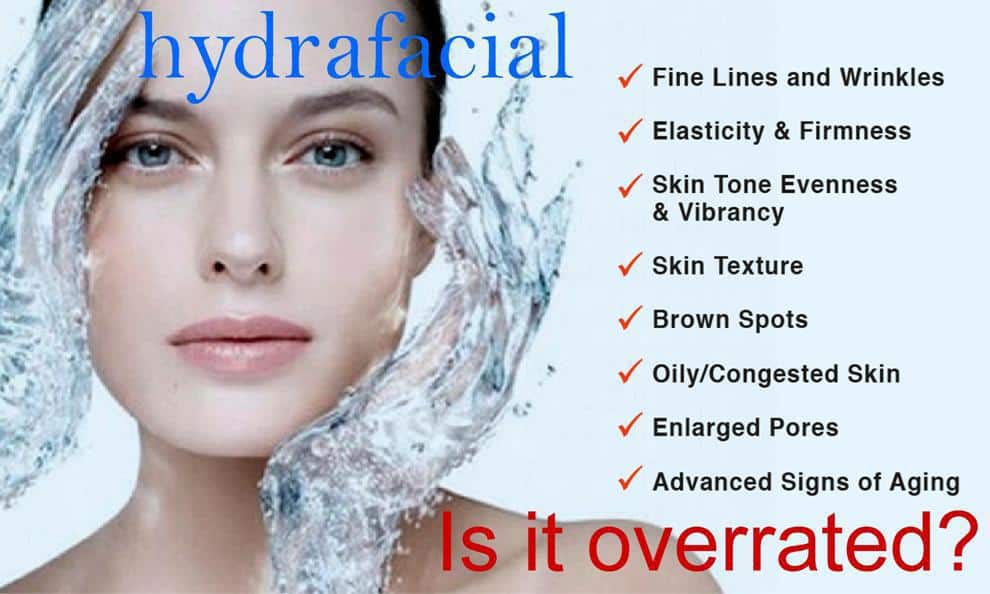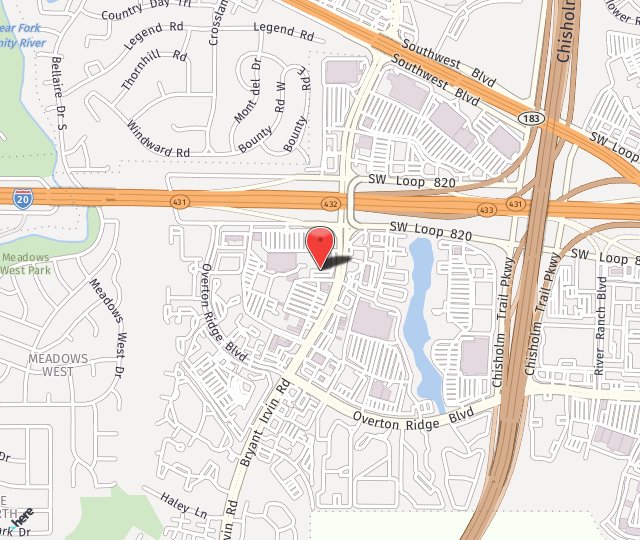Everywhere you turn, you hear about Hydrafacial. People are going nuts for it. Should you? What is it? Does it live up to the hype or is it just another over-marketed and over-priced beauty treatment?
What is a Hydrafacial?
Hydrafacial is the brand name for a device from Edge Systems, LLC. It combines 2 aesthetic standard treatments: dermabrasion and a very, very light chemical peel. While it does add a new twist to dermabrasion, it is essentially just an exfoliating treatment with the option of adding a very light peel… and a LOT of expensive marketing.
The new twist is how the dermabrasion is done. Dermabrasion simply means exfoliation of the skin or abrasion of the dermis. This process removes older, inactive, “dead” cells from the surface of the skin, frequently giving the skin a smoother feel and fresher, less “dull” appearance. It often allows for smoother application of cosmetics and better penetration of skin care products.
Dermabrasion has taken many forms through the years, both as professional and at-home treatments, and new versions have often gained serious momentum as the newest fad in anti-aging. We have seen everything from dermabrasion with a soft brush, a rough loofah-like sponge (the “Buff-Puff”), a grainy over-the-counter scrub with ground-up apricot pits (St. Ives Apricot Scrub – By the way, please, please don’t use this on your face! You might as well tear into your skin with industrial sandpaper), expensive automatic rotating brushes (Mia, Clarisonic, etc) and more. Professional, in-office treatments have taken the form of microdermabrasion; using a rotating tip or tiny crystals and suction to remove dead cells.
A more recent version is called “dermaplaning”, which uses a sterile surgical scalpel to gently scrape the surface of the skin. Dermaplaning has the added benefit of removing the fine vellus hairs from the face.
The Hydrafacial company has come up with the latest twist on microdermabrasion, and they call it “Hydradermabrasion”, or “Vortex technology”. What previous technology does with crystals, Hydrafacial does with jets of water and suction. The machine shoots jets of water at the skin and vacuums it back off into a reservoir. Does water do a better job at exfoliating than a brush, sponge, microcrystals or a blade do? No, although it is certainly more expensive.
If a peel is to be included, it will follow the exfoliation/suction process. A different tip is placed on the machine and very light, generic chemical peel solution is applied to the face, then immediately removed. This light peel is so gentle that most clients will not see any peeling at all, but when done regularly, will cause improvement in all skin issues with time.
The next steps are upgrades, called “boosters”. Clients are encouraged to add these boosters, at an additional charge, to “customize” their experience. The boosters address specific issues such as fine lines and wrinkles, discoloration or brown spots, aging skin and uneven skin tone. Clients are then encouraged to purchase serums to be used at home (another upcharge) to continue to treat their specific concerns at home.
To sum it all up: Hydrafacial is just a facial. It is the latest form of dermabrasion (and, if you are willing to pay for add-ons a very light peel).
What does Hydrafacial cost?
Depending on location, a Hydrafacial usually starts at $200-$350 for the basic process, and add-ons (boosters) and take-home products are additional charges. BUYER BEWARE: Because of the massive popularity of the treatment and the abundance of Hydrafacial devices in many areas, many providers have started offering the treatment at a lower cost than their competitors, but are no longer including the peel. Many providers have made the peel another additional upcharge. Without the peel, all you are getting is a very expensive dermabrasion treatment. Ask questions before you book an appointment and make sure you get what you are paying for!
Why is Hydrafacial so expensive?
Because the Hydrafacial company (Edge Systems) has put a lot of money into marketing, the brand name has gotten a lot of media attention. They have spent millions (if not billions) on advertising with social media influencers and on mobile truck/spas that toured the US and Europe from May through October, giving away free facials and raising brand awareness. This kind of marketing is expensive, so the machine is very expensive to purchase and that cost is passed on to the consumer.
In addition, to work with the machine, the optional peels and serums (added on for an upcharge) that can be administered during a treatment must be purchased through the Hydrafacial company. The prices and options are fixed based on whatever skin care company Hydrafacial is contracting with at the time. This means that the provider’s choice of “correctives” (serums) are not only very limited, but they will also drive the price of treatment even higher.
The technology and products themselves (exfoliation, light chemical peels and nourishing serums) are not expensive, but the money put into advertising and packaging has been. Hydrafacial has to make the money back somewhere and that somewhere is your pocketbook.
De-bunking the hype:
What about the “rosy glow” people talk about? It’s real. Clients do see an immediate “glow” to their skin post-facial. However, it is temporary. It is a result of the suction from the vacuuming process bringing good blood flow to the skin and will last a few hours. You can get the same effect from a workout or brisk walk. If a patient receives the peel portion, that process can give a lovely glow to the skin that may last for 24-36 hours.
What about that nasty water in the reservoir after a facial?
It is a popular Instagram practice to post pictures of your dirty water after a Hydrafacial. People love to think that all of the “gunk” came directly out of their pores, however, if you start your treatment with any lotions, creams, sunscreen or make-up on your face, those will all end up in the reservoir. Even if you start out with a freshly cleansed face, the peel solutions will be sucked into the reservoir, giving it a dirty appearance. Unfortunately, the suction of the machine does not pull debris from your pores. The improvements you see in your skin are from increased blood flow (from the suction), exfoliation, and peels, which increase cell turnover and purge the skin.
Representatives of the Edge company describe the device as a “medical-grade” hydradermabrasion device that carries out a patented three-part regimen-cleansing, exfoliating and infusing with intensive serums”.
First, there is absolutely nothing “medical” about the device. Anybody can purchase the machine or perform the treatments. No medical education, advanced training or license is needed so every “med spa”, aesthetician, and nail salon can offer it.
Second, just because the company patented their device and regimen doesn’t mean it is better, or even that it works. There are many ways to cleanse and exfoliate the skin. Does water do a better job at exfoliating than a brush, sponge, microcrystals or a blade do? No, although it is certainly more expensive. Does suction perform “extractions” (remove blackheads and blemishes)? Again, no.
Third, simply applying serums onto the skin after performing a peel will cause those serums to delve deeper into the skin than they would without having done a peel. It is not the application process (the Hydrafacial machine) that is causing the serums to penetrate more deeply into the skin, it is the fact that they are being put on the skin immediately after a peel!
So Is Hydrafacial worth it?
Hydrafacial is a good treatment, but it is JUST an exfoliating treatment with or without a very mild peel, with a few hundred dollars tacked on to pay for the brand name. Regular peels will cause tremendous improvements in your skin over time, especially if you do them regularly (we recommend a monthly peel and in 6 months you will see dramatically improved skin). Regular Hydrafacial treatments are good for your skin; however, you can do much better for much less.
At Skin Deep Laser MD, we have chosen not to offer Hydrafacials for several reasons. Our main reason is that we feel that the Hydrafacial is a brilliantly-marketed but overpriced facial. We can do much better for you at a much lower cost. We feature medical-grade peels (with or without microdermabrasion or dermaplaning), which we can customize based on your specific needs. Our patients get better results, and for a much lower price. Our clients are getting the best treatments for their individual needs, without having to over-pay for marketing and a brand name.
Additionally, we are proud to be one of the few providers that offer the most up-to-date technology in our state-of-the-art facility. Our advanced laser options can address various skin concerns with precision and efficacy, providing superior results.
To learn more about our Chemical Peel options, please visit our Chemical Peel page. For information about our cutting-edge laser treatments, check out our Laser Treatment Options.
If you would like to know more about how our patients are seeing better results and spending less money, schedule a consultation here with one of our licensed aestheticians.


